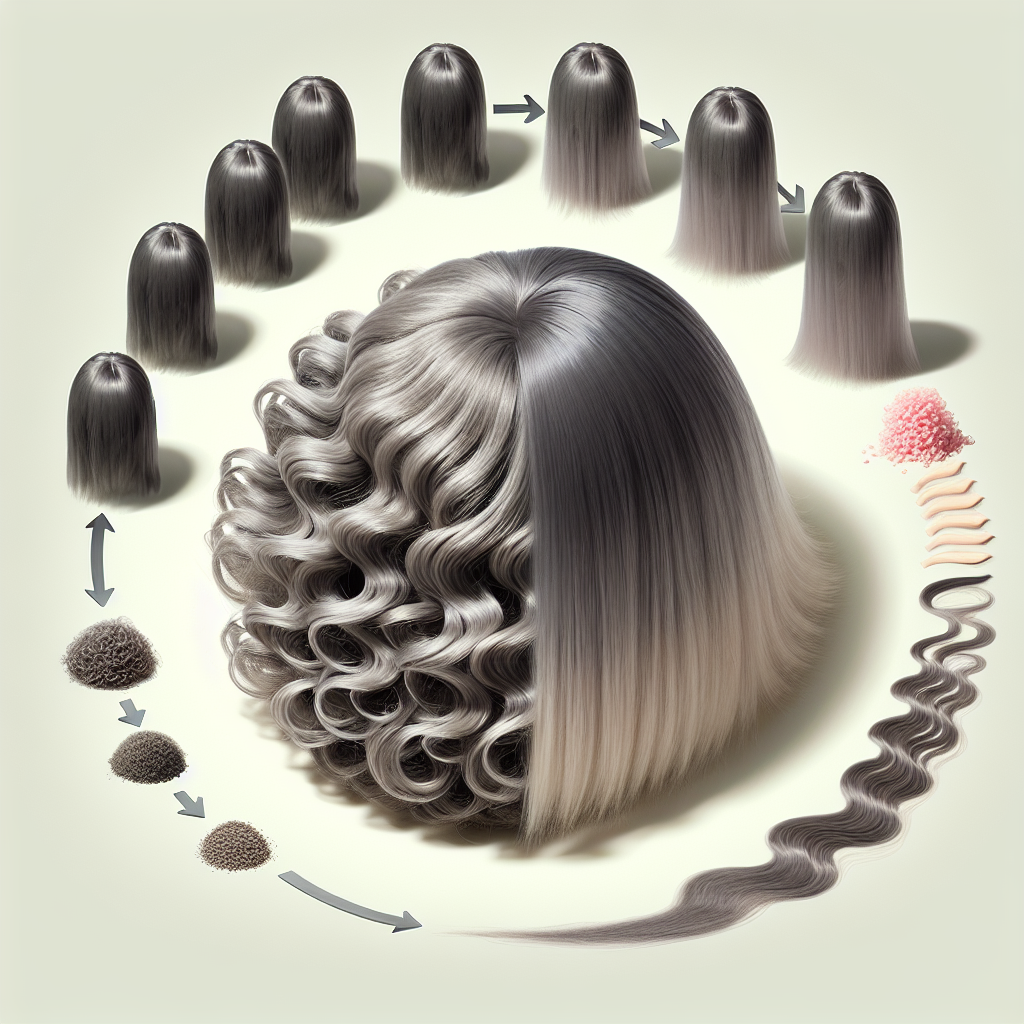Imagine being able to transform your grey hair into a beautiful human hair wig. Yes, you read that right. This may sound like a hair-raising idea, but have you ever wondered if it’s actually possible? In today’s article, we will explore the intriguing question of whether grey hair can be used to create a stunning and realistic human hair wig. So, grab a cup of tea, sit back, and join us on this journey to discover the wonders of wig-making with grey hair.
Can You Create a Human Hair Wig Using Grey Hair?

Understanding Grey Hair
Grey hair is a natural part of the aging process, and it occurs when the pigmentation cells in the hair follicles start to decrease. Instead of producing colored hair, they produce transparent hair, resulting in the appearance of grey or white hair. Grey hair can come in different shades, ranging from a soft silver to a steely grey. It is important to understand the causes and characteristics of grey hair in order to effectively create a grey hair wig.
The Process of Wig Making
Wig making involves several intricate steps to ensure the creation of a high-quality and natural-looking wig. The process begins with the selection and preparation of the hair, followed by the ventilation of the hair onto a wig cap. Customization and styling are then carried out to achieve the desired look, and finally, the wig goes through finishing touches to ensure its durability and longevity.
The Demand for Grey Hair Wigs
In recent years, the demand for grey hair wigs has been steadily rising. Grey hair is no longer seen as a sign of aging but as a fashionable and trendy choice. Many people choose grey hair wigs to achieve a sophisticated and elegant look. Additionally, grey hair wigs are versatile and can be styled in various ways, making them a popular choice among wig enthusiasts.
Challenges with Using Grey Hair for Wigs
Creating a human hair wig using grey hair does come with its fair share of challenges. One of the main challenges is the availability of grey hair. Grey hair is not as commonly found as other hair colors, making it harder to source. Additionally, the quality and texture of grey hair can vary, which can pose challenges in achieving consistency in the wig. Matching hair shades can also be difficult, as grey hair can come in different tones and undertones. Lastly, grey hair may have limitations in terms of styling options, as it can be more fragile and prone to breakage.

Advantages of Using Grey Hair for Wigs
While there are challenges involved, there are also several advantages to using grey hair for wigs. One major advantage is the natural appearance that grey hair wigs provide. They can seamlessly blend with the wearer’s natural hair, giving a realistic and undetectable look. Grey hair wigs also require less maintenance compared to colored wigs, as they do not need to be dyed or touched up. Grey hair wigs are particularly suitable for older age groups, as they can enhance a graceful and distinguished appearance. Lastly, grey hair wigs offer versatility in styling, allowing wearers to experiment with different looks and hairstyles.
Selecting and Sorting Grey Hair
When selecting grey hair for wig making, certain quality criteria should be considered. The hair should be in good condition, with minimal damage and breakage. Sorting the grey hair by length and texture is also important to achieve consistency in the wig. Ensuring that the hair quality is consistent throughout the wig is crucial for a high-quality end product.
Preparing Grey Hair for Wig Making
To prepare grey hair for wig making, it is essential to start with cleaning and conditioning. This helps remove any dirt or impurities from the hair strands while keeping them soft and manageable. Testing the strength of the hair is also crucial to ensure that it can withstand the wig-making process. Additionally, if desired, considerations for coloring or dyeing the grey hair should be made to achieve the desired shade or tone.
Creating a Grey Hair Wig
The creation of a grey hair wig involves several key steps. The base construction sets the foundation for the wig and determines its fit and shape. Hair ventilation techniques are then employed to carefully attach the grey hair onto the wig cap, ensuring a natural and seamless appearance. Customization and crafting the wig involve shaping and styling the hair to achieve the desired look, whether it’s a sleek bob or voluminous curls. Lastly, the wig goes through a finalizing process, which includes trimming any excess hair and securing the wig cap for durability.
Maintenance and Care for Grey Hair Wigs
Proper maintenance and care are essential for keeping grey hair wigs in excellent condition. It is recommended to store the wig on a mannequin head or in a wig stand when not in use to maintain its shape. Regular brushing and detangling should be done gently to avoid damage or breakage. Furthermore, using specialized products designed for human hair wigs can help in maintaining the wig’s texture and shine. It is also important to protect the wig from extreme heat and avoid wearing it while swimming or showering to prolong its lifespan.
Conclusion
In conclusion, it is indeed possible to create a human hair wig using grey hair. While there may be challenges in sourcing and working with grey hair, the advantages and growing demand for grey hair wigs make it a worthwhile endeavor. By understanding the characteristics of grey hair, mastering the process of wig making, and employing proper maintenance and care, a beautifully crafted grey hair wig can be created. So, embrace the elegance and sophistication of grey hair and explore the world of grey hair wigs!
